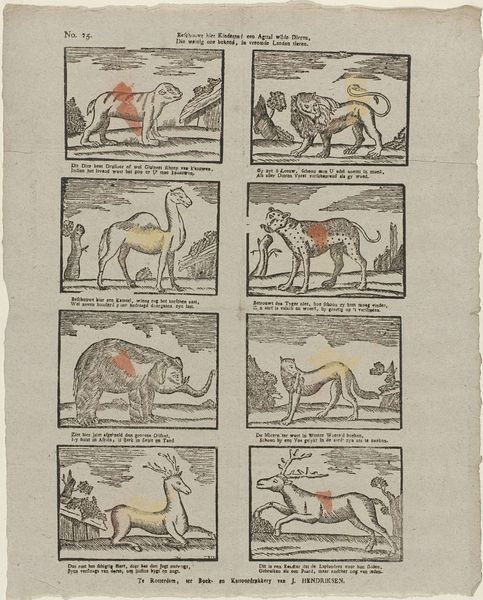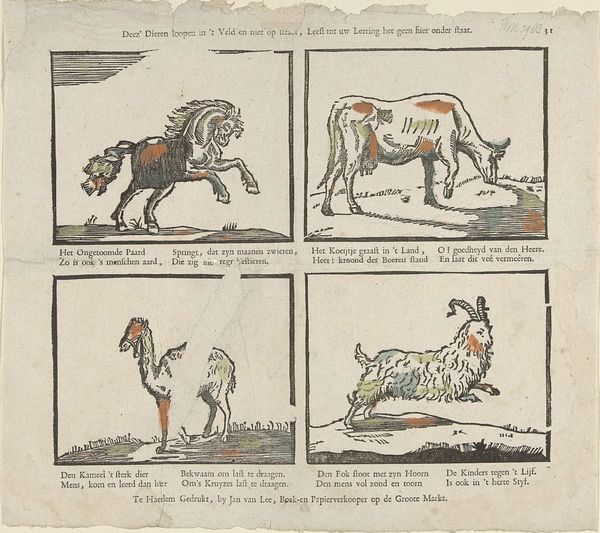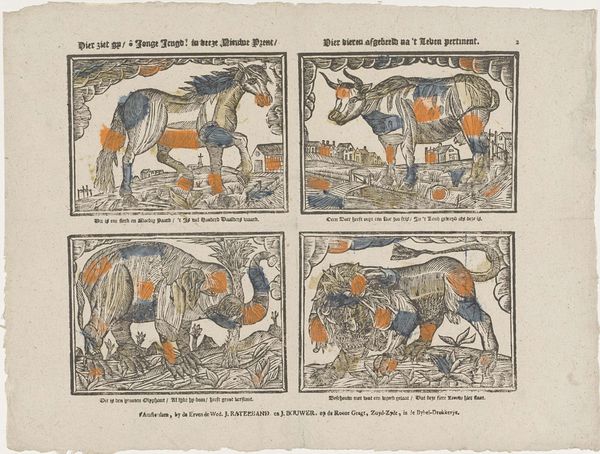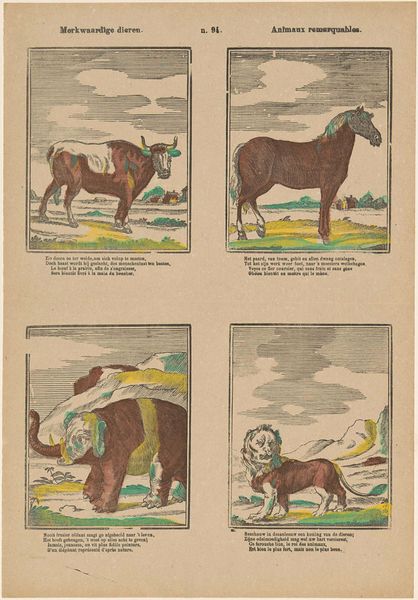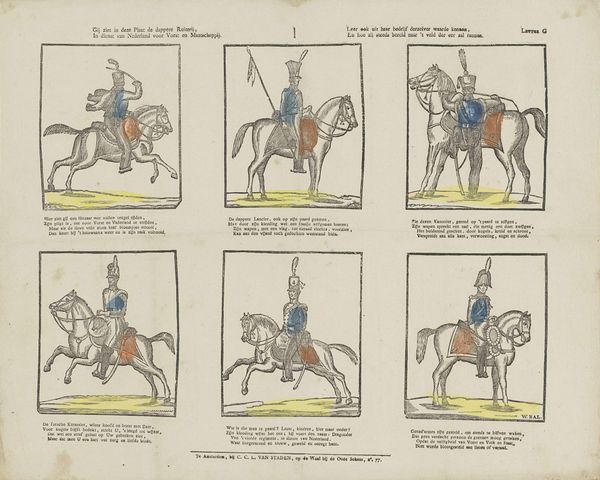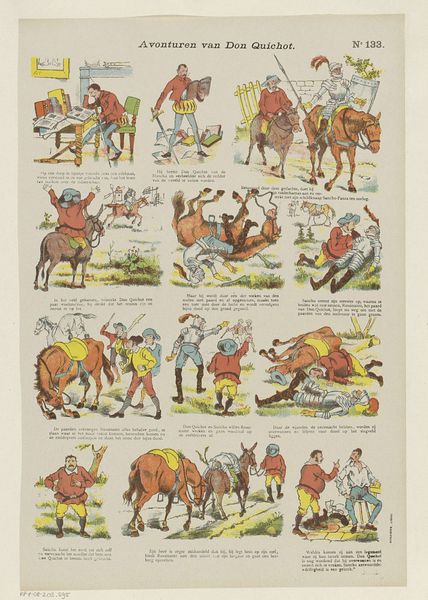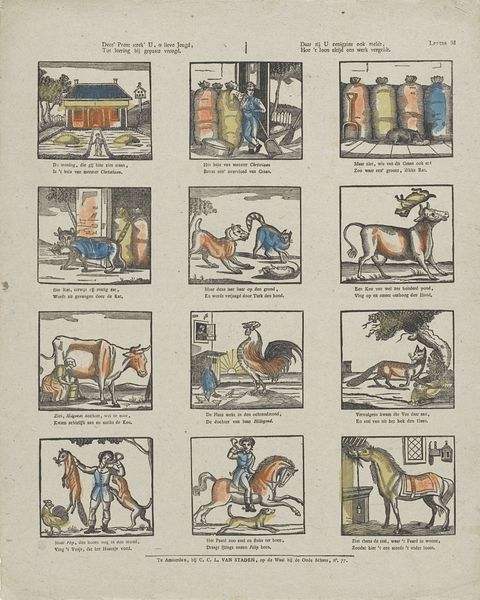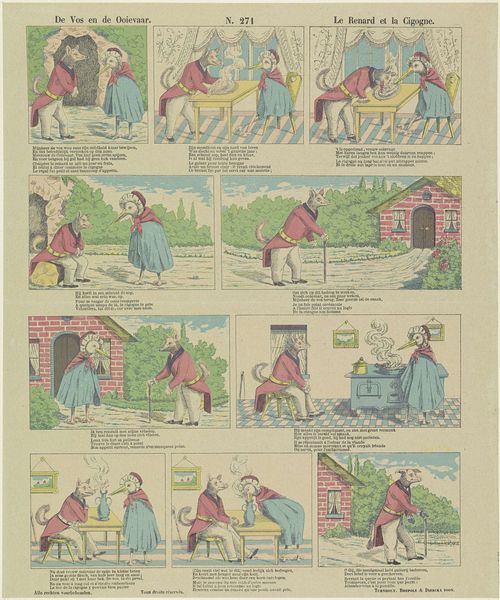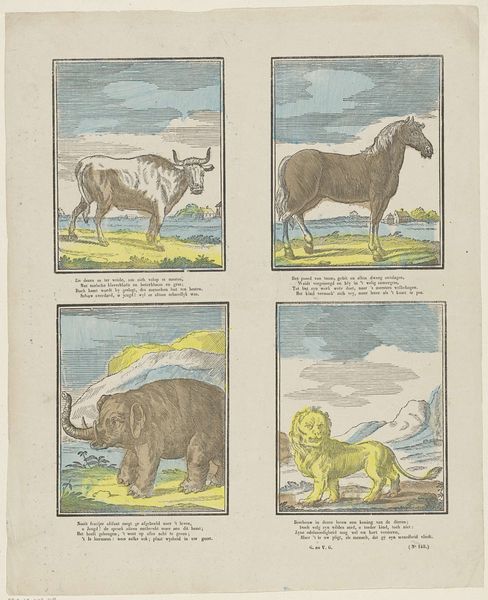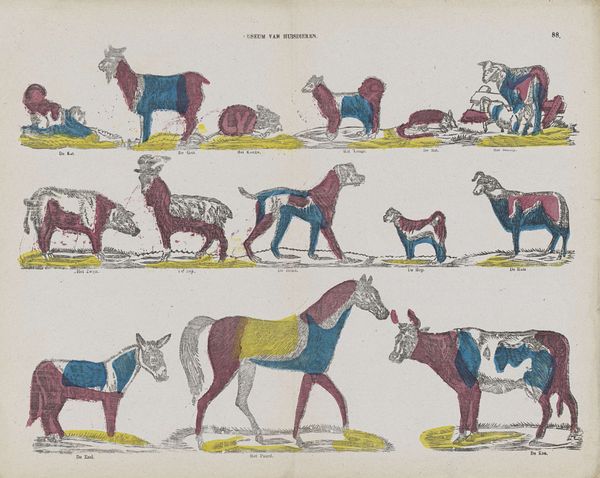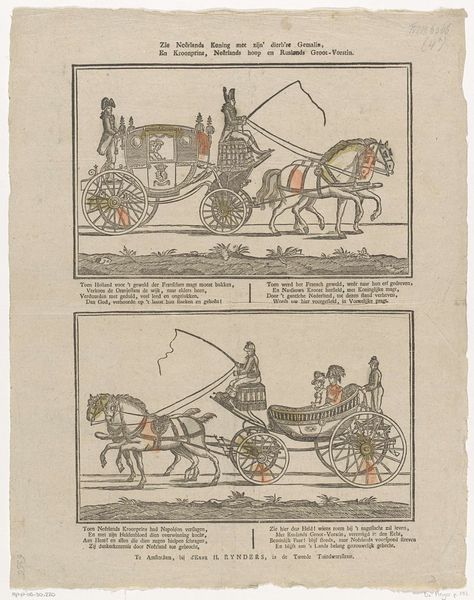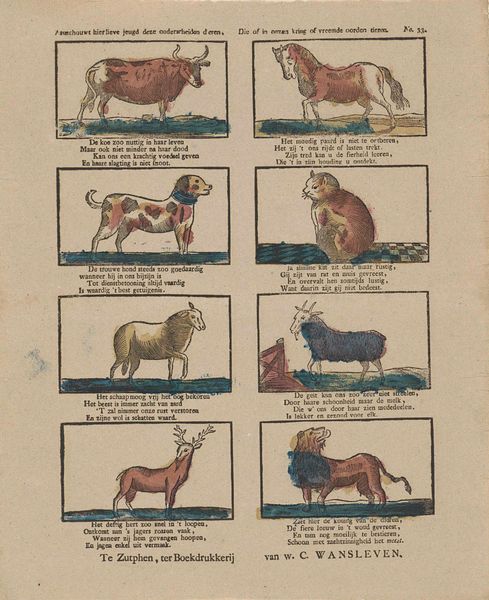
De stier, de tijger en het paard, / Die is het geld allen wel waard, / Daarbij een ezel en ezelin, / Is dit nu kind'ren na uw zin 1827 - 1860
comic strip sketch
quirky sketch
sketch book
figuration
personal sketchbook
sketchwork
ink drawing experimentation
pen-ink sketch
comic
sketchbook drawing
genre-painting
storyboard and sketchbook work
sketchbook art
Dimensions: height 328 mm, width 407 mm
Copyright: Rijks Museum: Open Domain
Curator: Here, we have a print, created sometime between 1827 and 1860, by P.J. Masier. The work is entitled "De stier, de tijger en het paard, Die is het geld allen wel waard, Daarbij een ezel en ezelin, Is dit nu kind'ren na uw zin". Editor: It strikes me as something rather charming, in a peculiar way. The simplified forms, arranged in these neat, framed squares... it has the aesthetic of a child's primer, almost like a storyboard, though the style suggests it’s clearly from a different era. Curator: The compartmentalized composition is indeed very interesting. The grid emphasizes each animal independently, while the hand-added coloring draws thematic relationships between them. The redness repeated across each creature's hide – what can we say of it? Is it merely an aesthetic choice, or does it operate as some signifier of value or other meaning lost to time? Editor: The text accompanying each animal could offer clues to that, particularly when paired with the socio-economic context of the Netherlands in the mid-19th century. Consider this piece against a backdrop of industrial and social changes that marked the era. The pairing of farm animals with a predator such as the tiger, framed by verses… It smacks of moral allegory. Is Masier speaking on social structures, perhaps? Curator: Fascinating. Though I see it still as a set of formal elements; each quadrant establishes a visual rhythm which echoes within the work, but doesn’t necessarily project outside of it. Observe the economy of line, and how each pose captures a distinctive animalistic essence using remarkably little detail. Editor: Well, even in focusing on line and form, we inevitably find cultural traces. Those aesthetic choices weren't made in a vacuum; Masier was working within particular traditions of imagery and pedagogy that gave certain forms and colors significance for his intended audience. Curator: Point taken, though perhaps my gaze lingered longer on how ingeniously this artist merged simple forms into coherent representations. Editor: And I appreciate the image all the more by considering what its purpose may have been, or what role it had in Dutch society. Curator: It seems we’ve both found some appreciation. A fascinating piece.
Comments
No comments
Be the first to comment and join the conversation on the ultimate creative platform.
